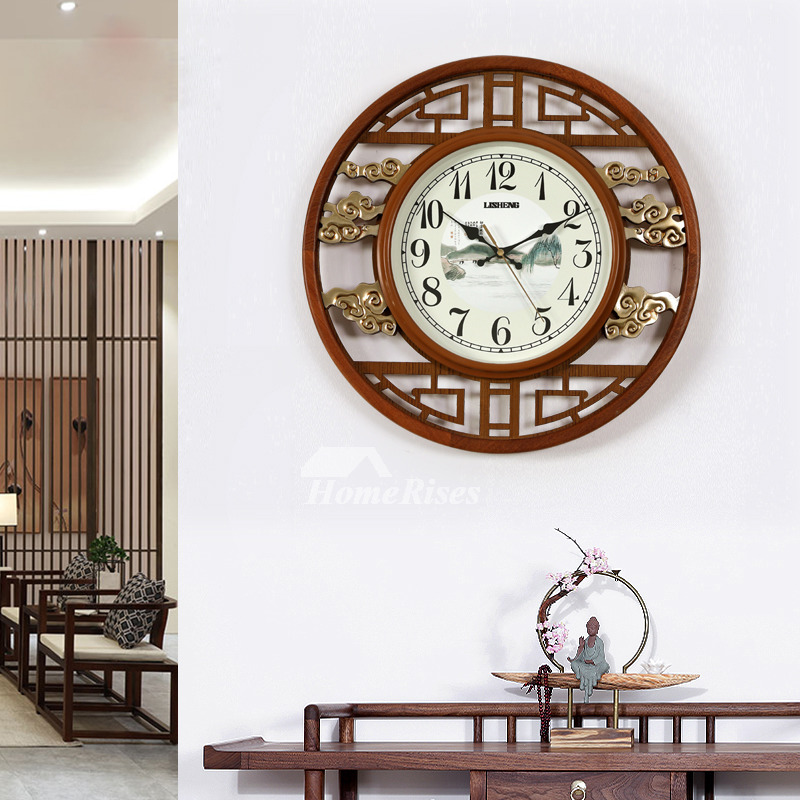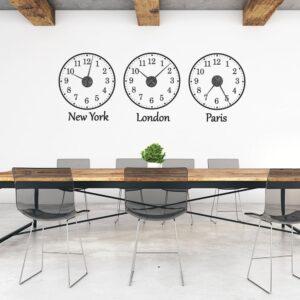Clocks have played a crucial role in human history, serving as both functional timekeeping devices and exquisite pieces of art. From ancient sundials to modern atomic clocks, the evolution of timekeeping devices reflects our fascination with measuring and marking the passage of time. In this article, we will delve into the history of clocks, explore the various types and styles available, discuss the materials used in crafting these timepieces, and offer some valuable tips for making informed decisions when purchasing clocks.
A Brief History of Clocks:
The journey of clocks traces back thousands of years, beginning with primitive sundials and water clocks. The Ancient Egyptians were among the first to use sundials, while the Greeks and Romans refined the technology with innovations like the water clock, or clepsydra. The mechanical clock, driven by weights and gears, emerged in medieval Europe during the 14th century, marking a significant advancement in timekeeping.
As technology progressed, pendulum clocks and spring-driven clocks gained popularity in the 17th century. The industrial revolution brought about mass production, making clocks more accessible to the general population. The 20th century witnessed the advent of electronic and quartz clocks, eventually leading to the highly accurate atomic clocks we use today.
Styles of Clocks:
Clocks come in various types and styles, each catering to different tastes and preferences. Some notable styles include:

Art Deco Clocks: Inspired by the Art Deco movement of the early 20th century, these clocks feature geometric shapes, bold colours, and streamlined designs, reflecting the glamour and sophistication of the era.

Mid-Century Modern Clocks: Influenced by the design principles of the mid-20th century, mid-century modern clocks typically showcase clean lines, organic shapes, and minimalistic details. Wood and brass are often prominent materials in these clocks.

Steampunk Clocks: Embracing a fusion of Victorian aesthetics and industrial elements, steampunk clocks incorporate gears, cogs, and metallic embellishments to create a vintage, yet futuristic, look.

Nautical Clocks: Featuring maritime motifs such as ship wheels, anchors, and compass roses, nautical clocks bring a touch of the sea to any space. These clocks often use weathered or distressed finishes for an authentic maritime feel.

Industrial Clocks: Drawing inspiration from factory and warehouse settings, industrial clocks showcase raw materials like metal and exposed gears. They add an edgy and utilitarian flair to modern or loft-style interiors.

Vintage Retro Clocks: Inspired by design elements from past decades, vintage retro clocks capture the essence of the 1950s, 1960s, or 1970s. They often feature bold colours, quirky shapes, and a sense of nostalgia.

Farmhouse Clocks: Reflecting the rustic charm of farmhouse décor, these clocks often incorporate distressed wood, galvanized metal, and simple, oversized numerals. They add a cosy and welcoming touch to country-style interiors.

Asian-inspired Clocks: Drawing inspiration from Eastern design traditions, Asian-inspired clocks may feature delicate motifs, bamboo, lacquer finishes, and traditional symbols. They bring a sense of tranquillity and balance to a space.

Futuristic Clocks: Designed with a contemporary and forward-thinking approach, futuristic clocks often have sleek, abstract shapes, LED displays, and unconventional materials. They are perfect for modern, cutting-edge interiors.

Eclectic Clocks: Combining elements from various styles, eclectic clocks are unique and diverse. They may incorporate unexpected materials, colours, and shapes, making them a focal point in eclectic or bohemian interiors.

Antique Reproduction Clocks: Crafted to resemble timepieces from a bygone era, antique reproduction clocks capture the charm and elegance of antique originals. They often feature intricate carvings, brass details, and ornate designs.
Types of Clocks:
Clocks come in a wide variety of types, each with its own unique features and functions. Here’s a list that summarizes some of the various types of clocks available:

Digital Clocks: Known for their easy readability, digital clocks display time in numerical digits rather than using traditional clock hands. They are often used in contemporary settings and electronic devices.

Flip Clocks: Also known as flip clocks or flip-digit clocks, these vintage-inspired timepieces use flipping cards or digits to display the time. They have a nostalgic appeal and are popular for their retro aesthetic.

Projection Clocks: These clocks project the time onto a wall or ceiling using a light source. Projection clocks are convenient for easily viewing the time from various angles, especially when lying in bed.

Station Clocks: Inspired by traditional train station clocks, these large, easy-to-read clocks often feature a simple design with bold, clear numbers. They make a bold statement in larger spaces.

World Time Clocks: Ideal for globetrotters, world time clocks display the time in multiple time zones simultaneously. They are perfect for individuals who need to keep track of international business or travel frequently.

Skeleton Clocks: Featuring an open design that exposes the internal gears and mechanisms, skeleton clocks showcase the intricate craftsmanship of the clockmaker. They are prized for their aesthetic appeal and transparency.

Chiming Clocks: Known for their melodic chimes, these clocks often play tunes or strike the hour. Grandfather clocks frequently include chiming mechanisms, adding an auditory element to the timekeeping experience.

Digital Smart Clocks: With the rise of smart technology, digital smart clocks can connect to the internet, display notifications, and even integrate with other smart home devices. They offer added functionality beyond traditional timekeeping.

Moon Phase Clocks: These clocks incorporate a display that indicates the current phase of the moon. Moon phase clocks are often associated with traditional and antique designs.
Materials:
Clocks can be crafted from various materials, each contributing to their unique aesthetic. Common materials include:
Wood: Classic and timeless, wooden clocks can range from rustic to polished, offering warmth and elegance.
Metal: Modern and sleek, metal clocks often incorporate materials like stainless steel, aluminium, or brass for a contemporary look.
Glass: Transparent or stained, glass clocks add a touch of sophistication and can complement various interior styles.
Plastic: Lightweight and versatile, plastic clocks come in a wide array of colours and designs, catering to more budget-friendly options
Dos and Don’ts When Purchasing Clocks:
When considering the purchase of a clock, keep the following tips in mind:
Dos:
Consider the overall design and how it complements your existing décor.
Check the accuracy of the clock’s timekeeping mechanism.
Assess the durability and quality of materials used in construction.
Ensure the clock is appropriately sized for the space where it will be displayed.
Don’ts:
Overlook the maintenance requirements of the clock.
Disregard the noise level, especially for clocks placed in bedrooms or quiet spaces.
Compromise on quality for price – investing in a well-crafted clock can be a lasting addition to your home.
Clocks have evolved from simple timekeeping devices to intricate works of art, reflecting the cultural and technological changes throughout history. With a wide variety of types, styles, and materials to choose from, finding the perfect clock for your home is an exciting journey. By keeping the dos and don’ts in mind, you can make a well-informed decision and bring a timeless piece into your living space.




